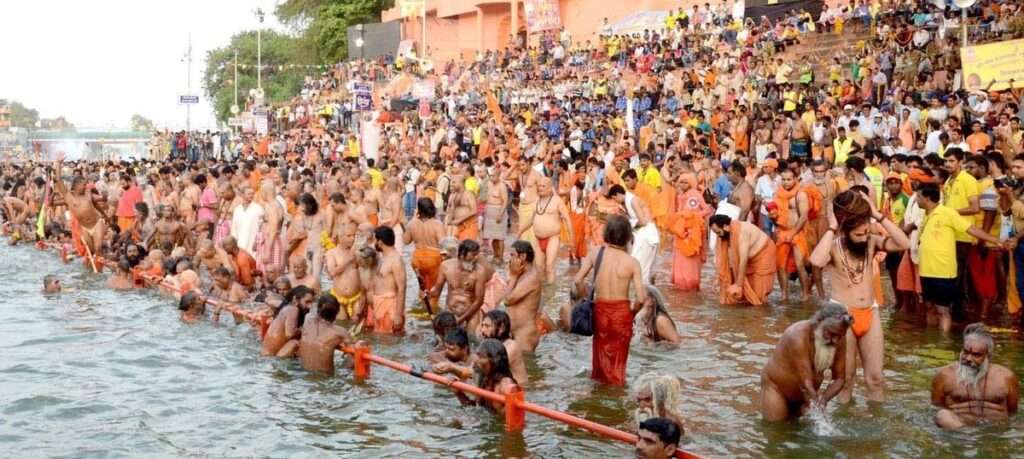Here’s a detailed explanation of every notable aspect of today’s Maha Kumbh Mela highlights on January 14, 2025

Massive Gathering
- Number of Participants: Over 40 lakh (4 million) people have congregated at the Triveni Sangam, the confluence of three rivers – the Ganga, Yamuna, and the mythical Saraswati in Prayagraj (formerly Allahabad). This number is expected to grow as the event continues over the next 45 days.
- Significance: The Kumbh Mela is not just a religious event but also a cultural phenomenon, attracting not only devotees but also tourists, scholars, and media from around the world. It’s considered the largest peaceful gathering of humanity with a shared purpose.
Sacred Dip on Paush Purnima
- Paush Purnima: This marks the full moon day in the Hindu month of Paush, a particularly auspicious day for bathing in the sacred rivers. The Kumbh Mela starts on this day, which was today, signaling the beginning of an extended period of spiritual activities.
- Spiritual Significance: The dip in the holy rivers is believed to cleanse one of all sins, provide spiritual merits, and lead to liberation (Moksha). The belief is that the waters of these rivers turn into nectar (Amrit) during Kumbh.
Amrit Snan
- Timing: The first dip, or “Amrit Snan” (nectar bath), began at 5:15 am, a time considered highly auspicious for spiritual activities.
- Process: The bathing ritual is conducted in an organized manner, starting with the Naga Sadhus from various Akhadas (traditional sects of Hindu ascetics) who are given priority due to their status in Hindu ascetic culture. These Sadhus, often naked except for ashes and minimal adornments, lead the procession into the water, symbolizing profound spiritual detachment and renunciation.
- Akhadas: There are several Akhadas like Juna, Niranjani, and Mahanirvani, each with their own hierarchy and rituals. They not only offer spiritual guidance but also maintain order during the Mela.
Political Controversy
- Mulayam Singh Yadav’s Statue: A controversy has arisen over the placement of a statue of Mulayam Singh Yadav, a prominent Indian political leader, at the Mela site. This has sparked debate regarding the mingling of religion with politics, especially in a setting dedicated to spiritual practice.
- Debate: Critics argue that such actions detract from the spiritual essence of the Kumbh Mela, turning it into a political stage. Supporters might see it as honoring a leader who has had a significant impact on the state’s political landscape.
- Cultural and Political Overtones: The Kumbh Mela has always had political undercurrents, with various leaders historically using it as a platform to connect with the masses. However, overt symbols like statues can polarize opinions on whether such spaces should remain purely spiritual.
Logistics and Management
- Security: With such a large crowd, security is paramount. The local and central government, along with paramilitary forces, ensure safety through extensive policing, crowd control measures, and emergency services.
- Infrastructure: Temporary cities are built with provisions for accommodation, sanitation, food, medical facilities, and transportation. The government constructs pontoon bridges over the rivers to facilitate movement.
- Health and Hygiene: Given the scale, maintaining public health is crucial. Measures are taken to ensure clean water supply, sanitation, and to manage waste disposal effectively to prevent outbreaks of diseases.
Cultural and Spiritual Activities
- Lectures and Discourses: Spiritual leaders, scholars, and saints hold discourses on various aspects of Hindu philosophy, yoga, and meditation, attracting those seeking spiritual enlightenment.
- Rituals and Performances: Apart from the main bathing rituals, there are numerous smaller religious ceremonies, cultural performances, and traditional music and dance, showcasing India’s rich cultural tapestry. (Also Read: Best Time to Visit Kumbh Mela)
